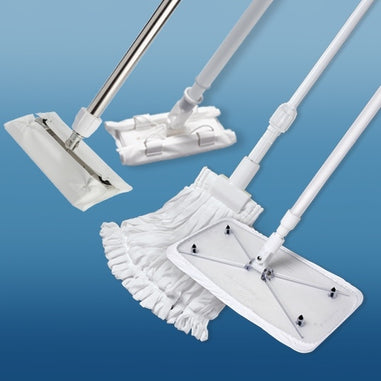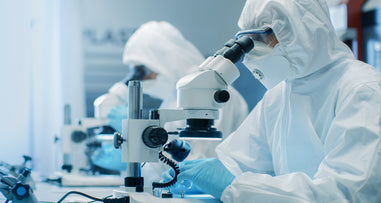- No products in the cart.
Medical devices are critical to our modern-day healthcare system. That’s because these devices are used to treat, diagnose, or prevent a medical condition. Equally important is to protect the lab technicians who work in this field and these environments known as cleanrooms.
What is a Medical Device Laboratory?
A medical device laboratory is a cleanroom where medical devices are manufactured. Before these devices can be developed, there is a lot of research and testing behind the scenes. The devices in the lab include the devices being created and the equipment used to analyze and evaluate the devices during research and testing.
There is a vast array of testing that goes on in these labs. Some examples of these services and research include the following:
- Stent and graft testing
- Porous coating testing
- Orthopedic device testing
- Microbiological testing
- Electrochemical corrosion testing
- Container and package testing
- Chemical compatibility testing
- Cardiovascular device testing
- Surgery medical devices
- Orthopedic medical devices
- Sutures
- Knee replacements
- Stents
- Pathology medical devices
- Catheters
- Implants
- Hip replacements
- Artificial hearts
- Pacemakers
What is PPE?
PPE stands for personal protection equipment. This equipment is worn in a cleanroom for protection from contamination and injuries. It’s essential for contamination control since it protects from airborne particles, chemicals, heat, and toxic material. The apparel should be made with low-linting material capable of protecting from liquids. PPE apparel and garments come in various styles, sizes, colors, and materials.

What is a Cleanroom and Why Are They Often Required in the Production of Medical Devices?
A cleanroom is used to produce medical devices in a tightly controlled environment. The space typically has a unique filtration system to remove dust, microbes, and particles. Humidity, airflow, and temperature are also under tight control in this type of environment.
Cleanrooms are essential for manufacturers producing medical devices because these tightly controlled rooms ensure the safety and quality of the finished product. A cleanroom ensures that bacteria and pollutants will not compromise safety or impact the medical device’s functionality.
Cleanrooms come with different classifications. The highest level provides the cleanest environment. Apparel in this category must provide the highest level of protection. This apparel typically includes face masks, beard covers, coveralls, shoe covers, cleanroom gloves, hair cover, and a hood. Less critical cleanrooms require only essential protection. Usually, only a lab coat, hair cover, and beard cover are needed in this environment.
The material used in PPE is based on the cleanroom classification and the protection needed. The different materials used include the following:
- SMS. SMS provides the best protection and is the most durable. It offers the best protection from dust and liquid in the most critical cleanrooms.
- Microporous. Microporous material offers protection in mid-level cleanrooms and protects from water.
- PE Coated Polypropylene. This material provides essential protection from light liquid splashes.
- Spunbound Polypropylene. Spunbound Polypropylene is a cost-effective option for essential protection.
- Polyethylene. Polyethylene is for short-term use and provides light and temporary protection in the least critical cleanrooms.
What is the Importance of Personal Protective Equipment for the Medical Device Lab?
Underestimating the importance of personal protective equipment in medical device labs compromises the safety of lab technicians and patients and the quality and function of the medical device. The overall importance of PPE for medical device labs is contamination control and protection from injuries.



















































